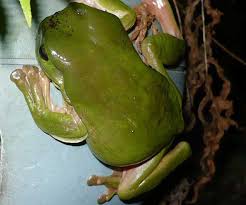The term “green tree frog” is a broad and generic name that can refer to various species of tree frogs with green coloration. Here are a few examples:
- American Green Tree Frog (Hyla cinerea): Found in the southeastern United States, these frogs are small, usually around 1.5 to 2 inches in length. They have a bright green coloration and are often seen near water sources.
- Australian Green Tree Frog (Litoria caerulea): Native to northern and eastern parts of Australia, these frogs are larger compared to some other tree frog species, with females reaching up to 4 inches in length. They are known for their vibrant green coloration and distinctive white stomachs.
- White’s Tree Frog (Litoria caerulea): Also known as the dumpy tree frog, this species is native to Australia, New Guinea, and Indonesia. They are often green, but their color can vary, and they are known for their stout bodies.
- Red-Eyed Tree Frog (Agalychnis callidryas): While not predominantly green, this tree frog is often associated with vivid green colors on its body. Native to Central America, it has striking red eyes and vibrant blue and yellow markings.
These frogs are generally arboreal, meaning they spend a significant portion of their lives in trees. They have adhesive toe pads that help them climb and grip onto surfaces. Their diet typically consists of insects and other small invertebrates.
It’s important to note that specific characteristics, behaviors, and distribution can vary among different species of green tree frogs, so the information provided here is a general overview. If you have a particular species in mind, more specific details can be provided.
